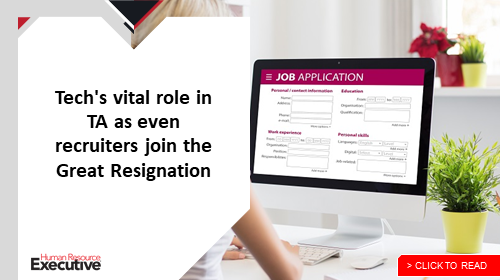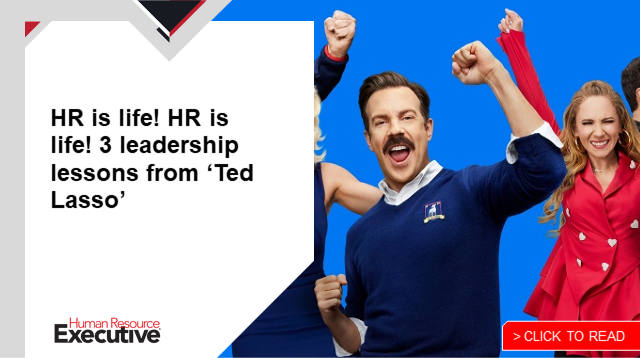As one of the few American companies that claims it hasn’t suffered greatly from the Great Resignation, General Motors’ recruiters still have their work cut out for them. In order to move its production to electric vehicles in the coming decade, GM’s team of 150 talent recruitment specialists needs to hire 12,000 new workers this year.
HRE spoke with Kyle Lagunas, the automaker’s global talent acquisition lead, attraction, sourcing and insights, ahead of his HR Tech Virtual keynote address, entitled “From Frayed to Focused: Tying Together the Many Threads of Talent Transformation,” which is set for 11 a.m. ET on March 4. In our interview, Lagunas shared his hiring mandate, how cutting edge tech can find the right talent and why recruiters must meet their moment. Register for HR Tech Virtual here.
HRE: As a recruiter for GM, you have two constraints among several challenges. One is to find the right talent and the other is to do it fairly quickly at the same time. Those don’t necessarily jibe, do they?

Kyle Lagunas: Yes, it’s being between a rock and a hard place. We have to do it all and that’s the game in recruiting and it has been for a long time. You gotta do it.
We’re trying to implement more business acumen into the operation itself. [This means] going into headcount forecasting on a quarterly basis and reviewing what the business is saying and what they need, looking at our actual recruiting capacity based on headcount, like how many recruiters we have and how many offers they’ve been able to make historically. Then calibrating with the business, [as in] you say you need 12,000 hires with the recruiters that we have. We can only commit to getting 11,000 and then how do we close the gap? That’s the conversation.
HRE: Do these conversations happen often for recruiters at other firms?
Lagunas: A lot of recruiting teams don’t get to have [that conversation] with the business. They just take that headcount requirement and chip away at it.
Related: Why HR leaders are unprepared for the talent marketplace revolution
We’re trying to be way more intentional. The only way that we can really do that is with a better understanding of what’s possible. We need more than just an applicant tracking system to do that. We are bringing in a lot of state-of-the-art recruiting tech to help us understand where we have bottlenecks, where the recruiters are having challenges and where we need to help overcome them. Then, our forecasting can get a bit more true-to-life instead of just a thought exercise.
HRE: Are managers realistic about the talent that is out there? Are they looking for unicorns?
 Lagunas: Sometimes you see recruiters who will post what are called evergreen jobs. These are roles that represent a skillset and for which there are going to be continuous hiring needs. They’ll have that rec open and they’ll continue to take applicants from that rec. We want to get away from this.
Lagunas: Sometimes you see recruiters who will post what are called evergreen jobs. These are roles that represent a skillset and for which there are going to be continuous hiring needs. They’ll have that rec open and they’ll continue to take applicants from that rec. We want to get away from this.
One of the core systems that we’re implementing now is called a CRM system for candidate relationship management.
HRE: Who makes the CRM and how does it work?
Lagunas: For the CRM, the partner that we are working with is Beamery. We’re taking an agile approach. CRM is one of the newer core systems in talent acquisition, but historically many of them had some challenges with user adoption. We’re starting with an early adopter program for our best recruiters, sources and marketers, and trying to focus on getting user buy-in at the expert level and then using all of these users to be champions for us as we roll this out to everyone else. [Lagunas is a former director of strategy for Beamery.]
This helps us engage talent outside of an apply process. If you applied for a role and you weren’t a great fit for it right away, you would get those cliche notes from the recruiter: “We’ll keep your resume on file and get back to you.” It never happens because your application just sits in a database that nobody ever looks at again, right? With the CRM, it’s continuously taking in data and it says [the person] had this skill and that skill, so you’re looking for that skill for this job. It’s going to keep people in constant consideration.
HRE: It’s not an AI bot that rejects candidates?
Lagunas: It would be unethical to completely reject talent. There’s a reason why you wouldn’t do that. We’re implementing a score in our AI matching and scoring tool and it gives every applicant an, A, B, C, or D rating. Even with a D rating, the AI bot might just have gotten it wrong. For these matching algorithms, you have to constantly calibrate it. For us to have anyone that’s given a D or even a C being automatically rejected, well, that’s giving way too much power to the bot. What are the recruiters doing?
 What we’re implementing is a best practice where recruiters are going to still review C and D candidates because we need to make sure it’s actually a win-win.
What we’re implementing is a best practice where recruiters are going to still review C and D candidates because we need to make sure it’s actually a win-win.
With this ecosystem of tech that we’re building, I’m trying to facilitate a zero-emissions talent pipeline, where no one is just completely rejected. It requires a lot of sophisticated tech to help make that possible because I’ve only got 150 recruiters to complete 12,000 hires this year.
HRE: That’s 80 positions per recruiter in a single year.
Lagunas: Eighty feels low, but yeah, we’ll do it.
HRE: There was a tweet recently that an HR professional saw thousands of open recruitment positions on LinkedIn. Why is this happening?
Lagunas: It’s the polar opposite of what happened during the Great Recession. At first, everybody froze and got scared and then they saw consumer behavior was still pretty strong. The market economies across the world are roaring.
 Every company’s growing and people need that talent. It’s a recruiter’s world right now and we’re just living in it.
Every company’s growing and people need that talent. It’s a recruiter’s world right now and we’re just living in it.
Related: How HR technology can help fix the Great Resignation
[At GM] we’re really trying to change the way the world moves. At the same time, we want to be the most inclusive company in the world. We have this “work appropriately” framework where everything we’re doing around the employee experience is not just like PR, it’s real. Our recruiters are feeling pretty bold and empowered to find the best talent and have a pretty good job doing it. We’ve got fire drills like anybody else, but I would say that with the investments we’re making in tech and the culture of hiring that is really focused on enabling and empowering the recruiter, we’re still getting the best recruiters in the door.
HRE: What drives your passion for this topic? Why is this meaningful for you?
Lagunas: There are so many problems in the world of work. There are just so many problems in the HR ecosystem and in this role I am going to be able to solve for several of them. I get to really enhance our recruiter’s experience by empowering them with good tech and good data. I get to enrich the candidate experience at a time when it’s their world and really bring a competitive value proposition to them that’s authentic. And I also get to showcase what I’ve learned across the different roles I’ve had as an analyst, a vendor and now as a practitioner leader and take all of the war stories from my friends and all of the best practices from my past and put it to work.
It’s exciting to have that opportunity to run that but also to have it pay off in a big way for other people. I’m not here to parade around myself and [say] look at how cool and smart I am. Look at these problems that can be solved. If you take the right approach, and honestly that’s why I chose the HR Tech Virtual Keynote topic. I really want to boil down what I’ve seen and I hope that I can make a difference for other talent leaders. This work is so important.
The post GM is building a ‘zero emissions talent pipeline.’ What that means for TA appeared first on HR Executive.